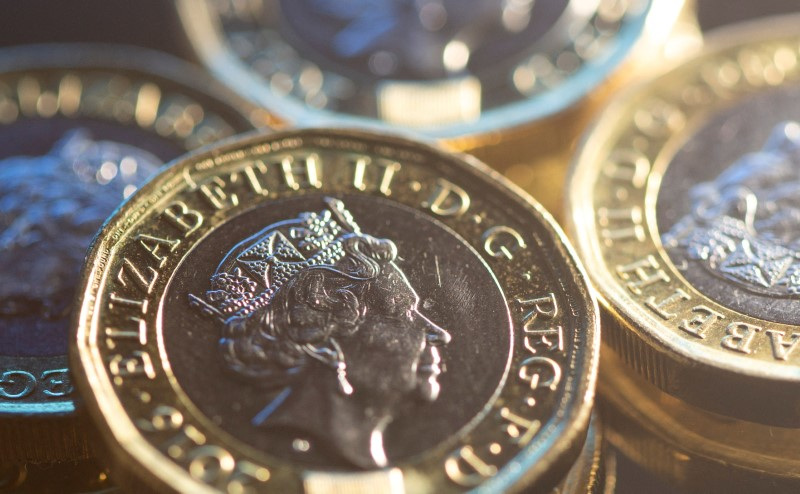(Reuters) - Sterling edged lower on Monday at the start of a data-heavy week in which investors will scan inflation prints from the UK and the U.S. to make bets on the pace of further interest rate hikes.
UK inflation likely eased further in January to 10.2% from 10.5% in December, having seemingly peaked at 11.1% in October. The data is due on Wednesday.
This is seen strengthening the case for the Bank of England to slow its pace of interest rates raises after it dropped its reference to "act forcefully" against inflation earlier in February, which markets took to signal that the central bank may be nearing the end of its rate-hiking cycle.
The pound was down 0.2% at $1.2035 against the dollar, while against the euro it was largely stable at 88.70 pence after the single currency marked its sharpest weekly decline since October against sterling.
"We think markets will be given reasons to consolidate their view around a 25bp hike (from BoE) in March, but expectations of further tightening may ultimately prove unfunded," said Francesco Pesole, FX strategist at ING.
BoE rate-setters including Catherine Mann and Jonathan Haskel have come out in favour of more interest rate hikes since the meeting, while Chief Economist Huw Pill said it was important not to raise borrowing costs too high.
"The EUR/GBP drop could extend to 0.8800 but we think markets are running out of reasons to stay bearish on the pair for longer," Pesole said.
Other data this week is expected to show that unemployment in Britain remained unchanged in December and weekly earnings rose less than they did in November.
A survey on Monday showed British employers expect to raise wages for their staff by the most in at least 11 years but the 5% pay deals for workers would still fall well below expected inflation.
British retail sales data for the month of January is expected to show that while consumers continued to spend less, the pace of decline in sales may have reduced in the new year.

Sentiment more broadly was seen influenced by U.S. inflation due on Tuesday that is seen showing that core inflation rose on a month-on-month basis in January, while headline likely trended lower.
The Federal Reserve said this month it had turned a key corner in the fight against high inflation, after having raised rates by a quarter percentage point. But a blowout surge in jobs growth prompted hawkish bets with traders now seeing a peak of 5.19% in July.